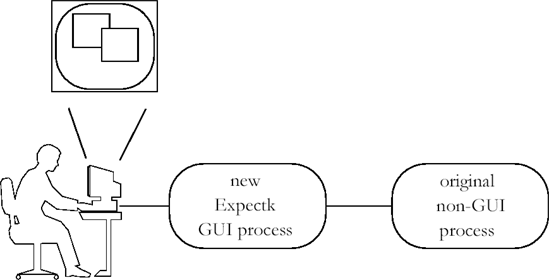Expect can be combined with Tk, a toolkit for the X Window System. The combination of Expect and Tk is called Expectk.[5] Using Expectk, it is possible to take an existing interactive application and give it a Motif-like X interface without changing any of the underlying program. No recompiling is necessary, and because the underlying programs are not changed, there is no need to retest them again. All your efforts can be focused on the graphical user interface. Making it look pretty is all you have to do.
While Expectk will allow you to build X applications, it is limited in the amount it can automate existing X applications. Currently, Expect can automate xterm and other applications that specifically provide automation support, but Expect cannot automate any arbitrary X application.
Expect is also limited in its knowledge of character graphics such as is done by Curses. Nonetheless, with a little scripting, testing and automation of character graphics can be accomplished, and in Chapter 19 (p. 453), I will describe one way of doing this. Ultimately, I believe that Expect will do best with this capability built in rather than provided via scripts. However, the requirements and interfaces are not obvious, and further experimentation and design is required. ExpecTerm is an example implementation of a built-in character-graphic capability based on an earlier version of Expect. ExpecTerm is available from the Tcl archive (see page 19).
Get Exploring Expect now with the O’Reilly learning platform.
O’Reilly members experience books, live events, courses curated by job role, and more from O’Reilly and nearly 200 top publishers.


